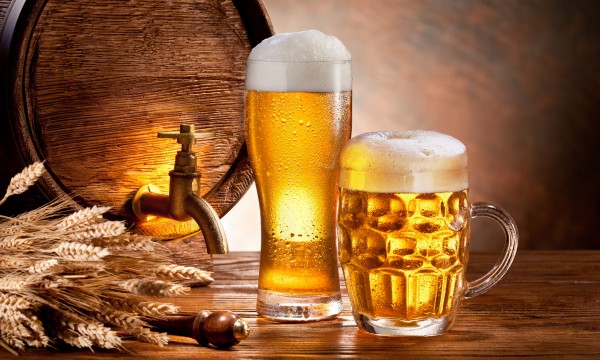Beer 101: Looking at the basics of how beer is made and the different varieties available.
Many of us love a good beer and indulge in the frothy stuff on a regular basis. But whether you are drinking a lager or a pale ale or one of the darker varieties like a porter or a stout, and whether it came from a craft brewery or one of the major producers, do you know what actually goes into the beer you are drinking? And do you know how those ingredients come together to make the final product?
At its most basic, beer is an alcoholic beverage made through the fermentation of malted barley and other cereal grains. The core ingredients of beer typically include water, malted barley (or other grains), hops, and yeast. Following is a quick look at the beer-making process:
 Malting: Barley grains are soaked in water to germinate, and then dried in a kiln which then halts the germination process. This produces malted barley, which contains enzymes that convert starches into fermentable sugars during brewing.
Malting: Barley grains are soaked in water to germinate, and then dried in a kiln which then halts the germination process. This produces malted barley, which contains enzymes that convert starches into fermentable sugars during brewing.
Mashing: The malted barley is mixed with hot water in a process called mashing to extract sugars, enzymes, and other important compounds. This process provides the fermentable sugars, known as the wort, that yeast will later consume to produce alcohol and carbonation in the beer.
 Boiling: The wort is boiled and hops are typically added during this stage which bring bitterness, flavor, and aroma to the beer. Boiling also sterilizes the wort, helping to prevent contamination.
Boiling: The wort is boiled and hops are typically added during this stage which bring bitterness, flavor, and aroma to the beer. Boiling also sterilizes the wort, helping to prevent contamination.
Cooling and Fermentation: After boiling, the wort is cooled and then transferred to a fermentation vessel. Yeast is added, and fermentation begins as the yeast consumes the sugars in the wort and converts them into alcohol and carbon dioxide. This process can take days and up to several to weeks, varying depending on the style of beer being brewed.
Maturation: After primary fermentation is complete, the beer is often allowed to age so that it can mature. This helps to develop flavors, either smoothing out or intensifying the taste of the final product depending on the ingredients used, the time of the maturation, and the process.
 Packaging: Once the beer has completed the steps above and achieved the desired flavor and quality, it is ready for packing into bottles, cans, and/or kegs where it can be sent out for final consumption (that is, we can start drinking it).
Packaging: Once the beer has completed the steps above and achieved the desired flavor and quality, it is ready for packing into bottles, cans, and/or kegs where it can be sent out for final consumption (that is, we can start drinking it).
The complexity and time involved in this process will vary depending on if this a home brew, a craft product, or a beer made for major consumption. The basic types of beers that will be created are Lagers, Ales, Wheat Beers, Sours, and Specialty/Hybrid Beers which I will look at in our next Beer 101 post.
You can read more about the beer-making process in Beer Brewing 101: A Beginner’s Guide to Homebrewing for Craft Beer Lovers.




+ There are no comments
Add yours